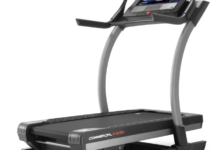How to Tailor Meals and Snacks for Active Lifestyles

Maintaining an active lifestyle often means juggling a packed schedule filled with work, exercise, family commitments, and social events. With so much going on, it can be challenging to prioritize nutrition. However, fueling your body with the right foods is vital for supports energy levels and enhancing performance. Here, we’ll explore how to tailor meals and snacks to fit your busy lifestyle while ensuring you meet your nutritional needs.
Understanding Your Nutritional Needs
Before diving into meal planning, it’s essential to understand the nutritional needs of an active lifestyle. The body requires a balanced intake of macronutrients—carbohydrates, proteins, and fats—to function optimally. Incorporating a daily multivitamin like Cellsentials can also support general health maintenance and well-being, filling in any nutritional gaps in your diet
- Carbohydrates are the body’s primary source of energy, especially during high-intensity activities. Opt for whole grains, fruits, and vegetables to provide sustained energy throughout the day.
- Proteins help to maintain proper muscle function. Incorporate lean meats, fish, dairy, legumes, and nuts into your meals to support your fitness goals.
- Healthy fats are important for supporting overall health. Sources like avocados, nuts, seeds, and olive oil are great additions to a balanced diet.
It’s also crucial to stay hydrated. Water intake should increase with physical activity to compensate for fluid loss through sweat.
See also: Wasp Nest Removal: Ensuring Safety and Peace of Mind
Meal Prepping for Success
One of the best strategies for maintaining proper nutrition amidst a busy lifestyle is meal prepping. Preparing meals in advance saves time and ensures you have nutritious options readily available. Here are some tips to get started:
Choose a Designated Prep Day
Select a day that works for you—typically a weekend—to dedicate a few hours to meal preparation. This way, you can cook larger portions and divide them into individual servings for the week ahead.
Focus on Versatile Ingredients
Choose ingredients that can be used in multiple dishes. For instance, roasted vegetables can be added to salads, stir-fries, or grain bowls. Grilled chicken can serve as a protein base for wraps, sandwiches, or pasta dishes.
Create Balanced Meals
Aim for a balance of macronutrients in each meal. For example, a meal could consist of quinoa (carbohydrate), grilled chicken (protein), and steamed broccoli (vegetable). Keep snacks similar—combine protein with healthy fats, such as apple slices with almond butter or Greek yogurt with mixed berries.
Smart Snacking Strategies
Snacking can play a crucial role in maintaining energy levels throughout the day, especially for those with busy schedules. Here are some snack ideas that are both nutritious and easy to prepare:
Grab-and-Go Options
Consider preparing snacks that you can easily take with you. Pre-portioned nuts, protein bars, or yogurt cups are excellent choices. These options are packed with nutrients and can be eaten on the move.
DIY Snack Packs
Create your own snack packs by combining various food items. For instance, mix whole grain crackers with cheese cubes and baby carrots for a satisfying and balanced snack. You can customize these packs based on your preferences, ensuring they remain appealing.
Incorporate Fresh Produce
Fresh fruits and vegetables are fantastic snacks. Slice up cucumbers and bell peppers and pair them with hummus for a refreshing and nutritious option. Keep fruits like bananas, apples, or oranges on hand for easy access when you’re in a rush.
The Importance of Mindful Eating
In our fast-paced lives, it’s easy to fall into the habit of eating on the go. However, taking the time to practice mindful eating can make a significant difference. Here’s how:
- Pay Attention to Hunger Cues: Listen to your body. Eat when you’re hungry, and try to distinguish between physical hunger and emotional cravings.
- Savor Your Food: Focus on the flavors, textures, and aromas of your meals. This not only enhances the eating experience but also helps you feel satisfied with smaller portions.
- Limit Distractions: Avoid eating in front of screens or while multitasking. This can lead to overeating and a lack of awareness about what you’re consuming.
Hydration: Don’t Forget the Basics
Water is often overlooked, yet it’s a crucial component of nutrition, particularly for active individuals. Hydration affects energy levels, performance, and recovery. Here are some tips for staying hydrated:
- Carry a Water Bottle: Keep a reusable water bottle with you throughout the day. This makes it easier to track your intake and reminds you to drink more often.
- Infuse Your Water: If plain water doesn’t appeal to you, try infusing it with fruits like lemon, berries, or cucumber for a refreshing twist.
- Monitor Your Intake: Aim for at least eight glasses of water a day, adjusting as needed based on your activity level and environment.
Nourishing Your Active Lifestyle
Tailoring your nutrition to fit an active lifestyle doesn’t have to be complicated. By meal prepping, choosing versatile ingredients, and making smart snack choices, you can easily fuel your body for optimal performance. Remember to stay mindful while eating and prioritize hydration. With these strategies, you’ll be well on your way to enjoying a balanced diet that supports your busy and active routine. Embrace the journey toward better nutrition, and watch how it enhances your overall well-being and performance!


